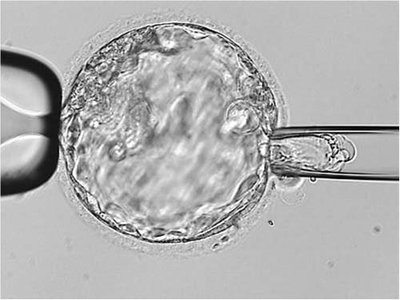IVM and IVF differ in their process of egg maturation. During an IVF procedure, the egg is implanted in the uterus after fertilization. However, during an IVM procedure, the egg matures outside the mother’s body.
IVM does not require the mother to undergo hormonal stimulation. As such, the lining of the womb might be too thin to support the mature egg and embryo. In such cases, estrogen would be given to the patient to help thicken the lining of the womb. Dr. Boonsaeng says this process might take time and the egg might have to be kept frozen until the womb is able to support it. In some cases, partial stimulation is carried out. Before the removal of her egg, the mother undergoes hormonal stimulation for no longer than five days. This way, ovarian hyperstimulation syndrome is prevented.
The success rate of an embryo becoming an infant through assisted reproductive technologies (ART) fertilization technique is usually around 20 percent according to Dr. Boonsaeng. While the percentage is only 12 for IVM treatment, the procedure allows for more embryos to be inserted in the womb with less side effects. Dr. Boonsaeng explains the success of the procedure: “Patients with full hormonal stimulation usually only have one embryo in them, but those who undergo IVM treatment may receive two or three embryos to achieve a success rate of around 30 percent.”


IVM Procedure
The IVM procedure consists of several steps that take place over a period of two weeks.
- Eggs are collected at an earlier stage (when they are immature)
- The immature eggs are placed in a special medium to enable the eggs to fully mature in the lab. (This is generally the case for patients who are unable to undergo hormone stimulation.)
- If an abnormality is detected in the sperm, the retrieved eggs that have undergone the intracytoplasmic sperm injection (ICSI) procedure will then be treated with the “Calcium Ionophore” solution, which will stimulate fertilization. This will increase the quality of the embryo, thereby improving the chance of pregnancy.
- Once the eggs are matured, they are injected with sperm (ICSI procedure)
- The injected eggs are cultured for several days to allow the embryo to develop (same as IVF)
- Two to three days after fertilization, the embryos are transferred to the mother’s womb (same as IVF)
IVM technology provides great help in meeting treatment needs, as no medications or hormones are given to stimulate ovulation before egg collection. For many years now, IVM has consistently achieved high levels of success in treatment.
The Development of IVM Technology at Samitivej Sukhumvit Hospital Bangkok
Just seven to eight years ago, the IVM technology in use was still only conventional, but in 2016, Samitivej Sukhumvit Hospital advanced its IVM technology with huge steps forward through the development of the Modulator IVM. Advancement in this area means that the immature eggs are retrieved from the ovaries and brought to a lab for maturation by means of a special culture medium with added small quantities of hormones, helping to bring the eggs to much more complete maturation before the sperm injection and fertilization of the matured eggs. These breakthroughs will greatly increase the likelihood of conception for couples struggling with issues of infertility.
Therefore, 2016 is another year of pride and joy for us, in that we have officially adopted the use of the Modulator IVM and have done so with great success. It is our aim to help fulfill the dreams and wishes of many couples longing to have children, allowing them to do so more simply and efficiently than ever before.
For Dr. Boonsaeng Wutthiphan, his patients include Thais and foreigners in equal measure. They include those who have suffered from blood clots in the veins (deep vein thrombosis) and those who have undergone breast cancer treatment. For these patients, IVM is the best form of treatment. By not being exposed to high estrogen levels, the patients’ medical conditions have a lesser chance of reoccurrence.
To read the story of a couple who had undergone IVM treatment, click here.
Photo Credit: bradfordst219 via Compfight cc



